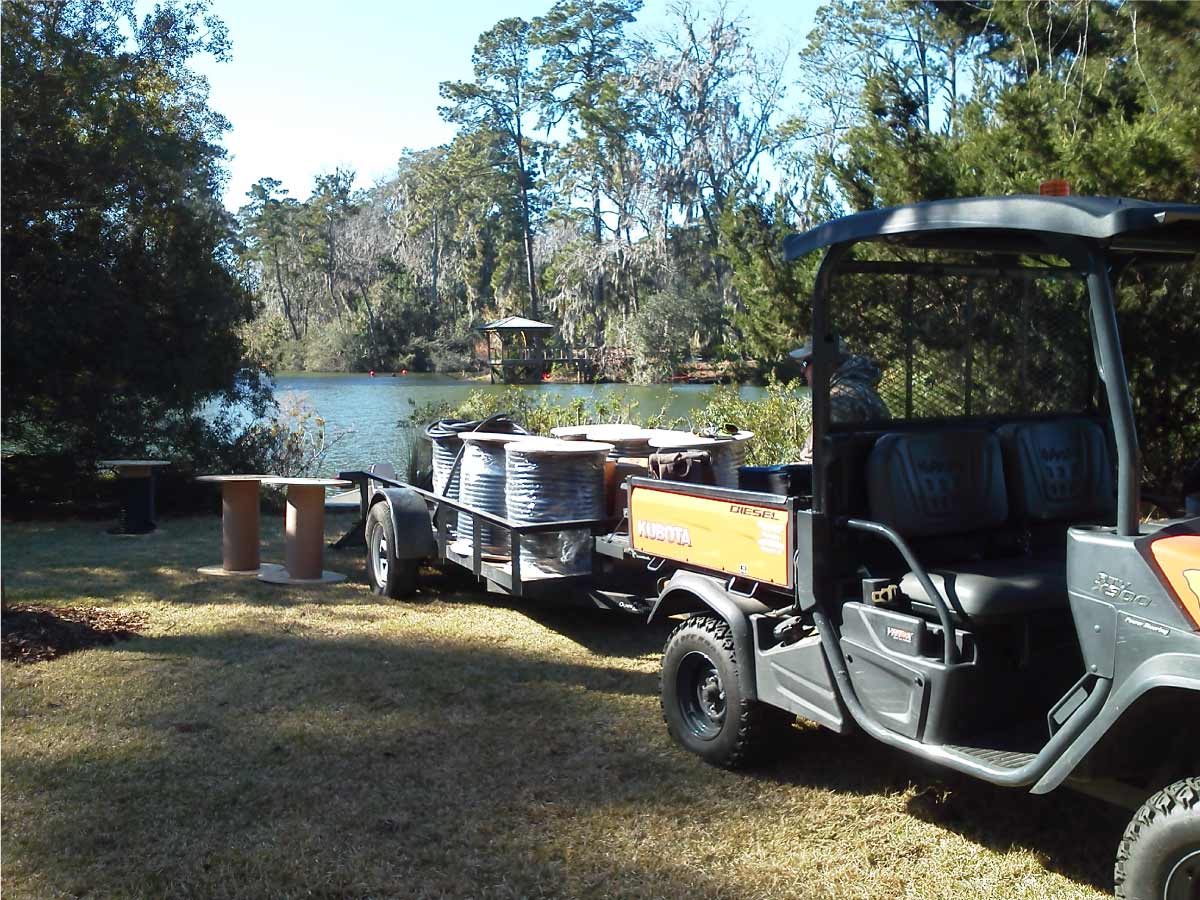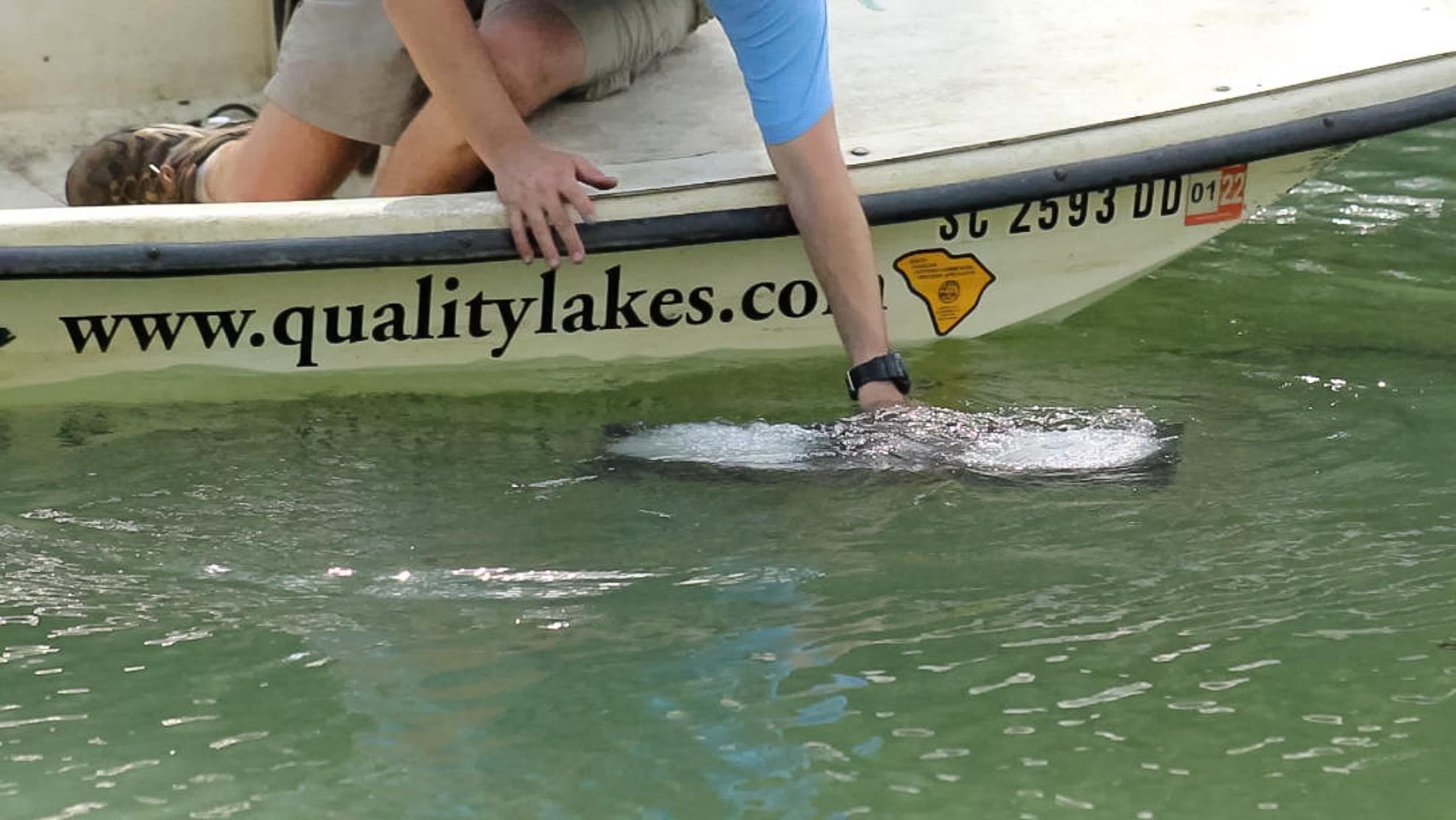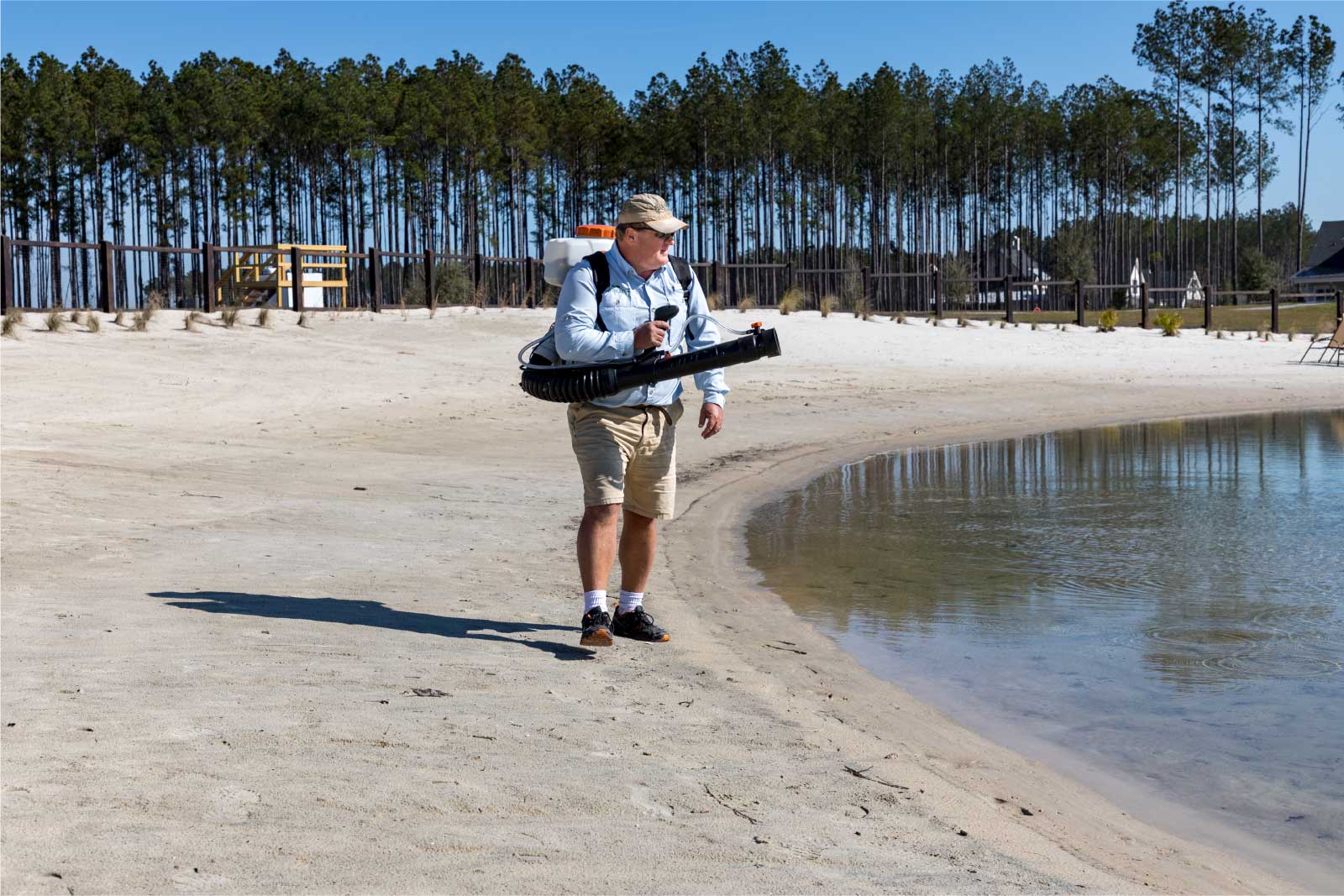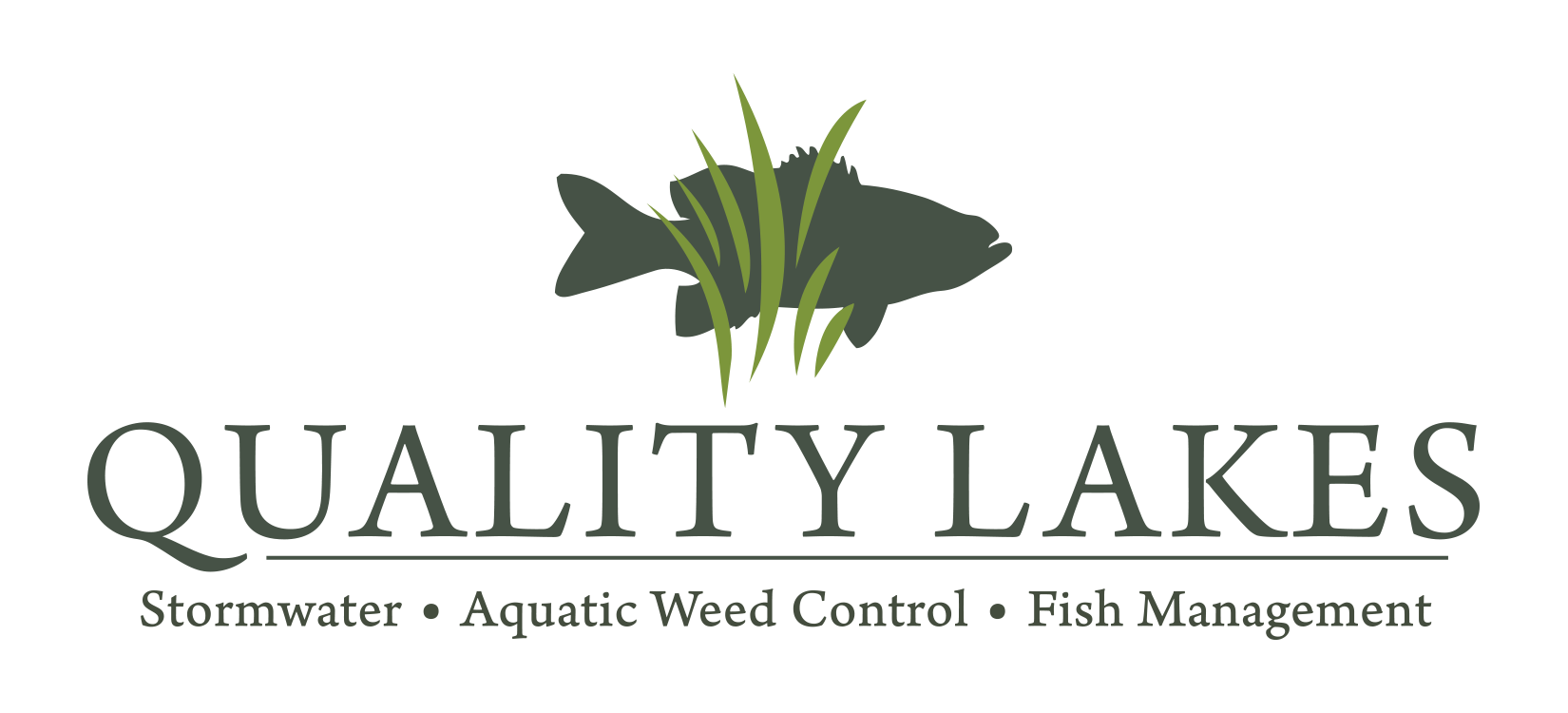Water Quality
Aeration
Aeration provides destratification within a stormwater system, providing oxygen year-round to stormwater systems. This aides in natural nutrient cycling, allowing naturally-occurring bacteria to utilize nutrients such as phosphorous, taking it out of the vicious algae growth cycle. QLI has been designing and installing bottom aeration systems for 12 years and has access to the best scientifically-proven aeration products on the market.


Harmful Algae Blooms (HABs)
Cyanobacteria, also referred to as blue-green algae, are a common occurrence in many stormwater systems. HABs are a result of excessive phosphorous levels. Many HABs produce foul-smelling green, white, red, and brown scums that in turn produce very foul odors. Depending on the variety present, HABs do produce toxins that can be harmful to wildlife and humans. QLI can monitor and detect HABs as well as conduct treatments to reduce their abundance.
Nutrient Monitoring
Stormwater systems are designed to capture nutrients such as nitrogen and phosphorous before entering sensitive natural waterways. Over time excessive nutrient levels can produce routine filamentous algae and planktonic algae blooms, causing unsightly lagoons, decreased water flow and movement, and often displeasing odors and aesthetics. QLI employs a variety of methods to reduce nutrient levels.

